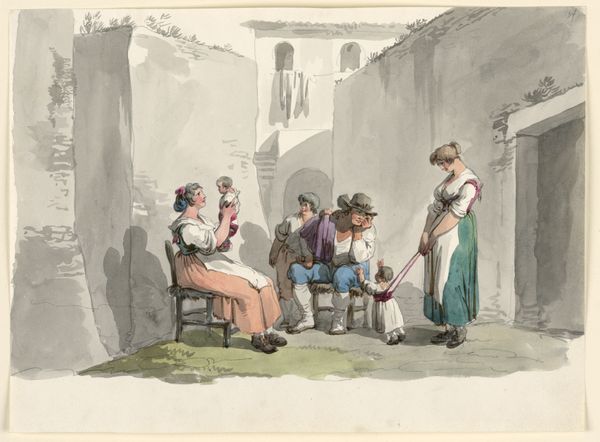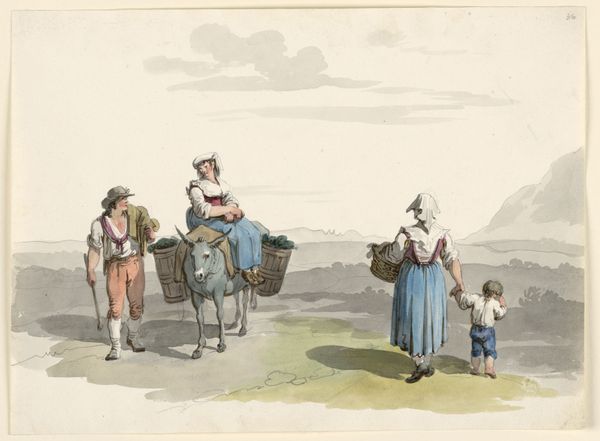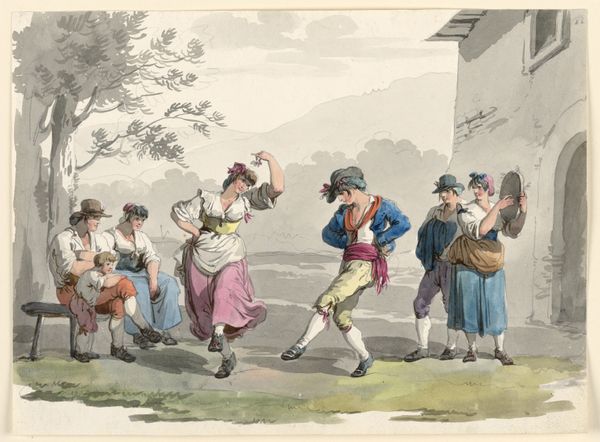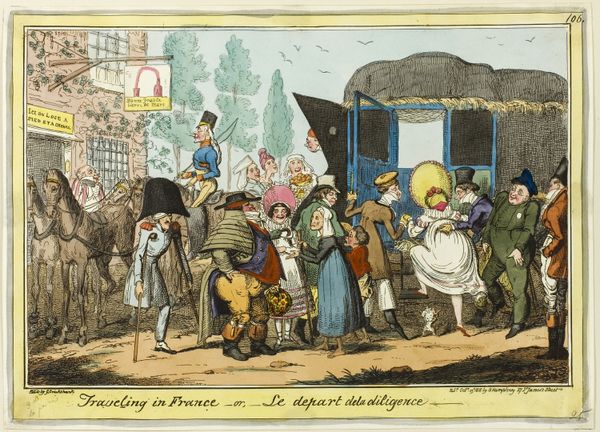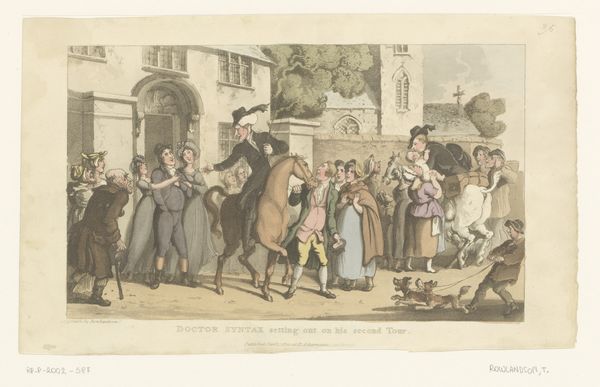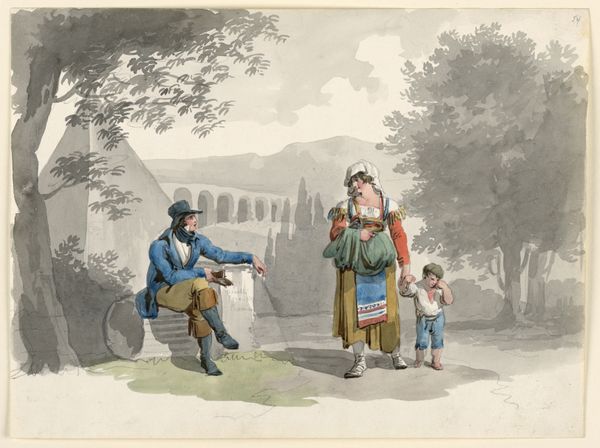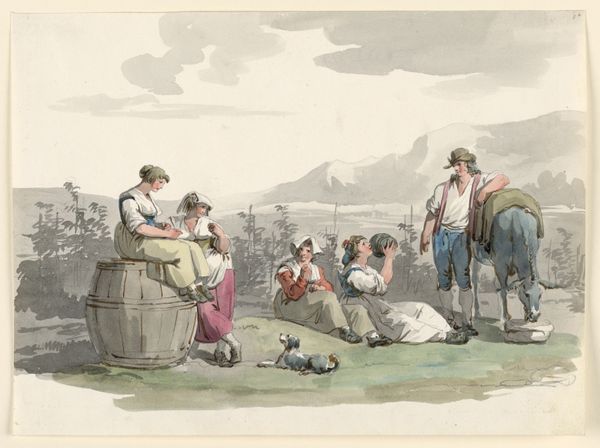
painting, watercolor
#
painting
#
landscape
#
figuration
#
watercolor
#
romanticism
#
genre-painting
Copyright: Public domain
Curator: Look at this piece, “Ave Maria at Tivoli” by Bartolomeo Pinelli, completed in 1808. Pinelli captured it in delicate watercolor. It’s quite evocative, isn’t it? Editor: Absolutely. The color palette gives the entire scene a muted, dreamlike quality. It's as though we're looking at a memory. It gives me a nostalgic ache, almost a religious pull. What is it that they’re all praying for? Curator: I see the interplay of light and shadow directing our gaze. Notice how Pinelli uses the archway to frame the figures, creating a sort of stage for this humble scene of devotion. Editor: Yes! And the artist uses contrast to achieve that. I can’t ignore how the artist set a soft light from within a small shrine and arranged for an outside dark gradient, and with it arranged the masses to look towards the light. Curator: The way he’s composed the scene tells us much, even though it feels like a genre painting that shows a slice of daily life. A group of people gathered, their poses suggesting reverence or supplication. Then you have that solitary figure on the donkey. A study in contrasts, if you ask me! Editor: Ah, yes, the fellow on the donkey seems aloof, his posture disconnected from the piety of the praying group. What do you read into that? Does he serve as an almost sardonic counterpoint? Curator: Possibly. It might hint at social commentary; or perhaps it speaks to the everyday interrupting sacred moments, you know, mundane against sublime. Watercolors aren't as straightforward as, say, an oil painting. The subtlety allows a certain ambiguity. Editor: You’re right. It is this exact ambiguity, this lack of concrete narrative that resonates. The viewer becomes more engaged, filling the gaps with his own experiences and interpretations. Curator: So while we explore the structure of this small tableau, and decode the image, its real power may well be in its capacity to stir emotions. That quiet sense of longing is the beating heart of Pinelli’s vision. Editor: Beautifully put! Perhaps it reminds us to pause, seek a glimmer of transcendence within the everyday hustle, and find peace somewhere—even in the muted watercolor washes.
Comments
No comments
Be the first to comment and join the conversation on the ultimate creative platform.
